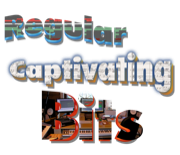LogicBlog - Tips and Tricks for Logic Pro
31/03/11 06:30 Filed In: Links
As you probably know, Logic Pro is my DAW of choice. I am constantly learning new things and am always surprised what Logic Pro is capable of.
There’s a fairly new blog, the LogicBlog, with lots of tips and tricks for Logic Pro. I learned some great things there and I hope it is useful to you, too.
There’s a fairly new blog, the LogicBlog, with lots of tips and tricks for Logic Pro. I learned some great things there and I hope it is useful to you, too.
Comments
Very long breaks in scores
30/03/11 07:11 Filed In: Orchestration | Arrangement
Sometimes you have scores with very, very, very long breaks for some instruments. This may for example happen with large backing bands only playing during the chorus. You should of course tell these folks when they need to come in again (most notation applications will write one bar and put the number of silent bars in it), but if they have a break of 30 bars or so, noone will actually count!

silent bars in Sibelius
This is where you need to use cues: Look for an easily recognizable part someone else is playing directly before your players have to come in again and write it in the parts in cue notes (smaller notes). The players need to hear the cue part, so choose someone they can hear (very loud, sitting near them, ...) This will help them find the place. Also make absolutely sure the conductor (or whoever may be responsible for leading the players) gives them their entrance very clearly, i.e. by making eye contact one bar before they need to come in.

cue notes
It can also help greatly to mark sections in the parts, even if the players have nothing to do. It helps them keeping track of where they are:

In this image you can see that we have an 8 bar verse, followed by an 8 bar chorus. If the player has to come in right after the chorus, s/he will have no problems finding the entrance.
If you have a song and players have to play only the chorus or so, you usually do not need to write down the exact number of silent bars. Give them a brief decription „Chorus only!“ or something along these lines and make sure to rehearse their entrances.
silent bars in Sibelius
This is where you need to use cues: Look for an easily recognizable part someone else is playing directly before your players have to come in again and write it in the parts in cue notes (smaller notes). The players need to hear the cue part, so choose someone they can hear (very loud, sitting near them, ...) This will help them find the place. Also make absolutely sure the conductor (or whoever may be responsible for leading the players) gives them their entrance very clearly, i.e. by making eye contact one bar before they need to come in.

cue notes
It can also help greatly to mark sections in the parts, even if the players have nothing to do. It helps them keeping track of where they are:
In this image you can see that we have an 8 bar verse, followed by an 8 bar chorus. If the player has to come in right after the chorus, s/he will have no problems finding the entrance.
If you have a song and players have to play only the chorus or so, you usually do not need to write down the exact number of silent bars. Give them a brief decription „Chorus only!“ or something along these lines and make sure to rehearse their entrances.
Free Harpsichord and Organ libraries
28/03/11 20:20 Filed In: Software
They have a nice selection of Harpsichords, Organs and other instruments - and best of all, they are free. The samples are pretty good. Considering the price, they are awesome :)
There is also a nice clock, which is very useful for sound design (you can hear it in my track „Time Machine“). So if you are looking for some samples to expand your sonic palette, look no further and head over to Sonimusicae!
Give them their first beat!
27/03/11 18:36 Filed In: Composition | Orchestration
One thing that annoys musicians tremendously is composers writing a nice, soaring line for them, but not allowing them to play a last, short note on the first beat of the next measure when their line has ended. Somehow we are internally wired to expect our parts to finish on a first beat. The most prominent example of this is the end of most pieces: After a (lengthy) final cadence they tend to end with a big "bang" on a first beat. Try to compose this way in the whole piece and your players will have much more fun playing your stuff!
Regular Captivating Bits - starting right now!
27/03/11 17:13 Filed In: General

So here are the „Regular Captivating Bits“, where you will find all sorts of quick tips, hints and lots of other stuff. Basically, this will be the place for everything I want to tell you which does not fit on the blog. This page will be updated quite often, with the tips coming from every aspect of music production you can imagine: composition, orchestration, arrangement, business, software tips, links to great resources and many, many more things! So check back and give me your feedback!